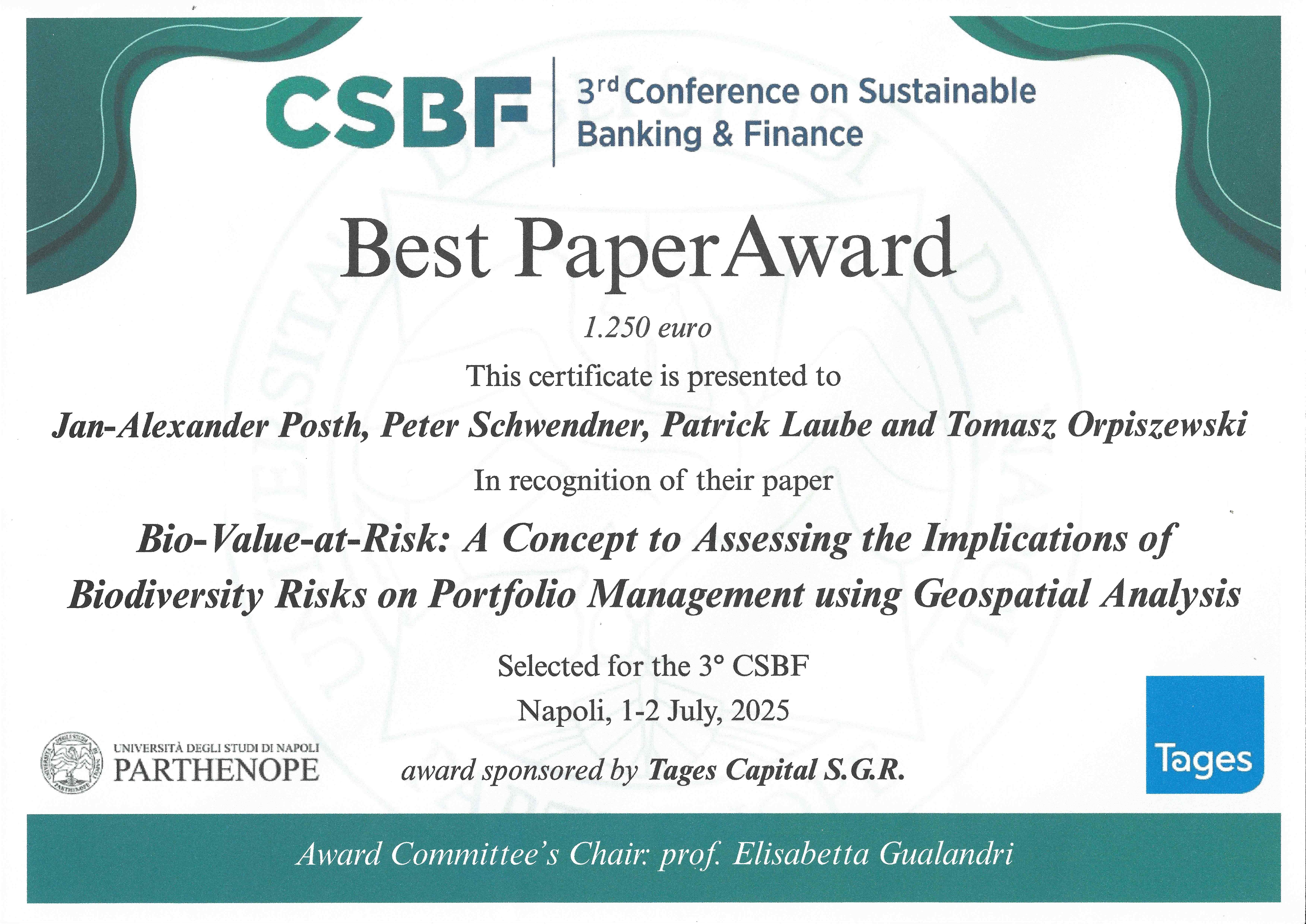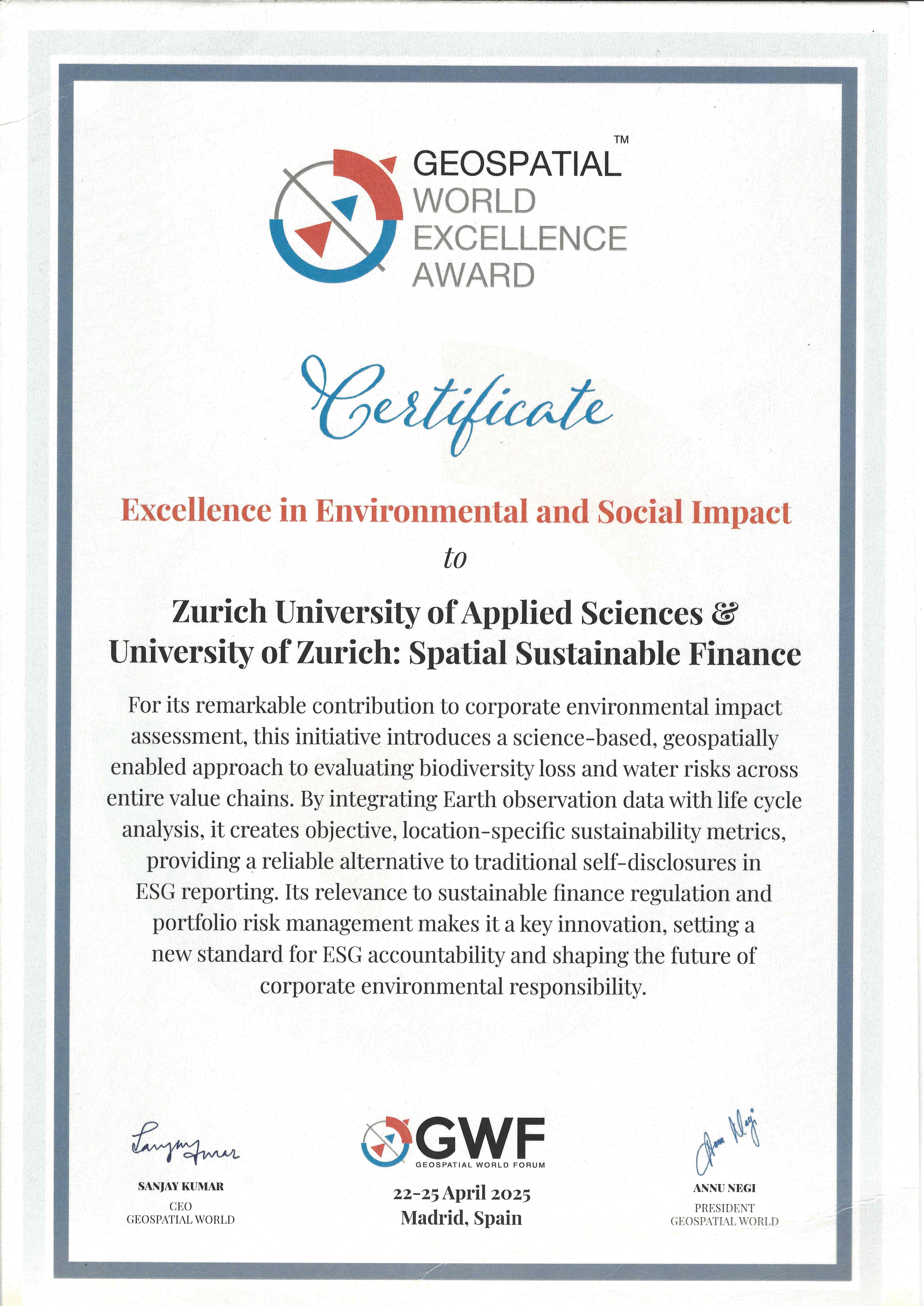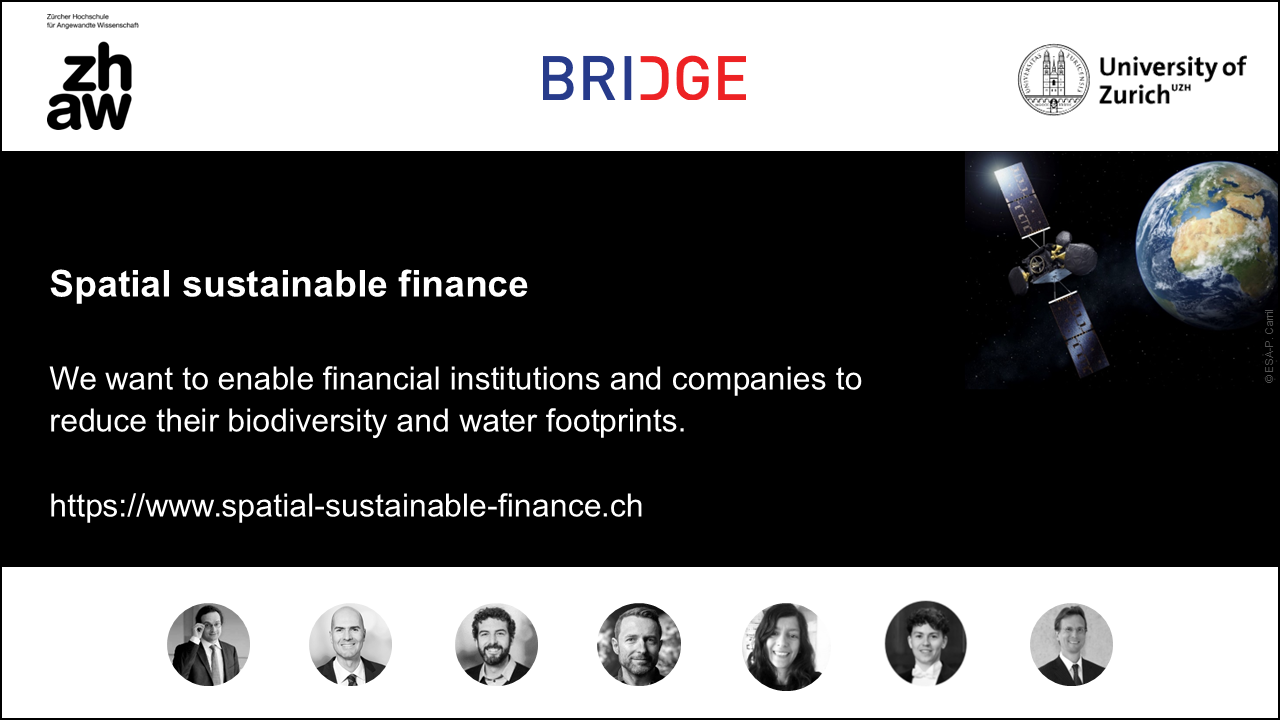Abstract:
Biodiversity loss and water scarcity are occurring at an unprecedented pace. Environmental degradation caused by economic activity induces long-lasting consequences affecting global health, food security and quality, poverty, migration and armed conflicts. Private-sector investors that follow sustainable finance principles represent an important lever to address global environmental and social challenges, as they can contribute to switching the production and consumption systems and counteract environmental degradation. Sustainable financial operations rely on sensitive, harmonized and objective environmental data, but as of today, even the most transparent companies disclose almost no data on their environmental impact and exposures.
This project aims to develop a scientifically robust approach for rating companies with regard to their contribution and exposure to environmental degradation. The tremendous improvement and increased availability of Earth observation and complementary geodata offer enormous yet underused potential to assess biodiversity and water systems changes. Unlocking this potential provides new avenues to globally monitor biodiversity losses and water risks caused by company activities.
We develop and adopt geoprocessing workflows to analyze and model the spatial footprints of companies representing company venues, production sites, or in general areas where companies are active. We relate Earth observation data to locations of company assets and develop methods to assess the capacity of ecosystems to sustain biodiversity and water and to monitor company caused risks for biodiversity loss and water degradation across sectors of activity. Based on scoping analysis, we will evaluate the suitability of spatial measures for sustainable finance covering biodiversity, water risk and environmental integrity accessible from spaceborne operational data. We also integrate indirect life cycle-based impacts for spatialized (subnational, biome- and watershed-related) biodiversity loss and water risk covering the entire life cycle of the involved industrial sectors. We combine the spatial environmental assessments with LCA methods to transform non-spatialized into spatialized sustainability indicators.
We investigate how to replace company ratings based on the companies' self-disclosed data with a more systematic, objective, transparent and science-based process. We test the developed workflows on selected case studies. We facilitate our research and innovation process through collaborations with specialized companies and an advisory board formed by key stakeholders.
Based on the project, a spin-off company further develops the proof-of-concept into products for the rating of companies and for quantifying material financial burdens to companies' assets, revenues, and in a further stage, to their traded stocks and bonds. These products help investors and companies implement new regulation beyond the EU Taxonomy on Sustainable Finance, especially from the EU Biodiversity strategy for 2030, and achieve the sustainability goals set by UN PRI and UN EPFI.
Project consortium:
Institute of Wealth & Asset Management, Zurich University of Applied Sciences
Institute of Natural Resource Sciences, Zurich University of Applied Sciences
Department of Geography, University of Zurich
Funding: BRIDGE Discovery and DIZH
Demonstrator: https://www.biovar.ch
Publications and preprints:
Hauser, Leon Tobias and Damm, Alexander and Santos, Maria J. Corporate Biodiversity and Water Impact and Risk: Seven Key Principles for Leveraging Insights From Satellite Remote Sensing (2025). Earth's Future Volume 13, Issue 3: https://doi.org/10.1029/2024EF005474
Posth, Jan-Alexander and Schwendner, Peter and Laube, Patrick and Orpiszewski, Tomasz. Bio-Value-at-Risk: A Concept to Assessing the Implications of Biodiversity Risks on Portfolio Management using Geospatial Analysis (2024). Available at SSRN: https://dx.doi.org/10.2139/ssrn.4784271
Wider collaboration: Geospatial ESG Consortium with TFND


